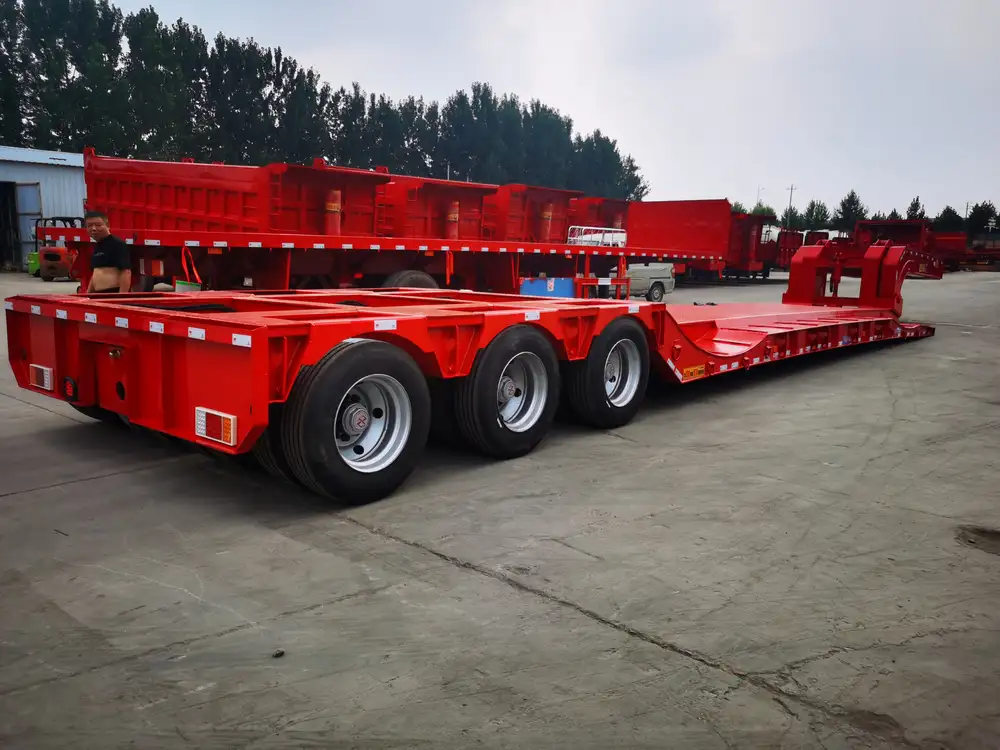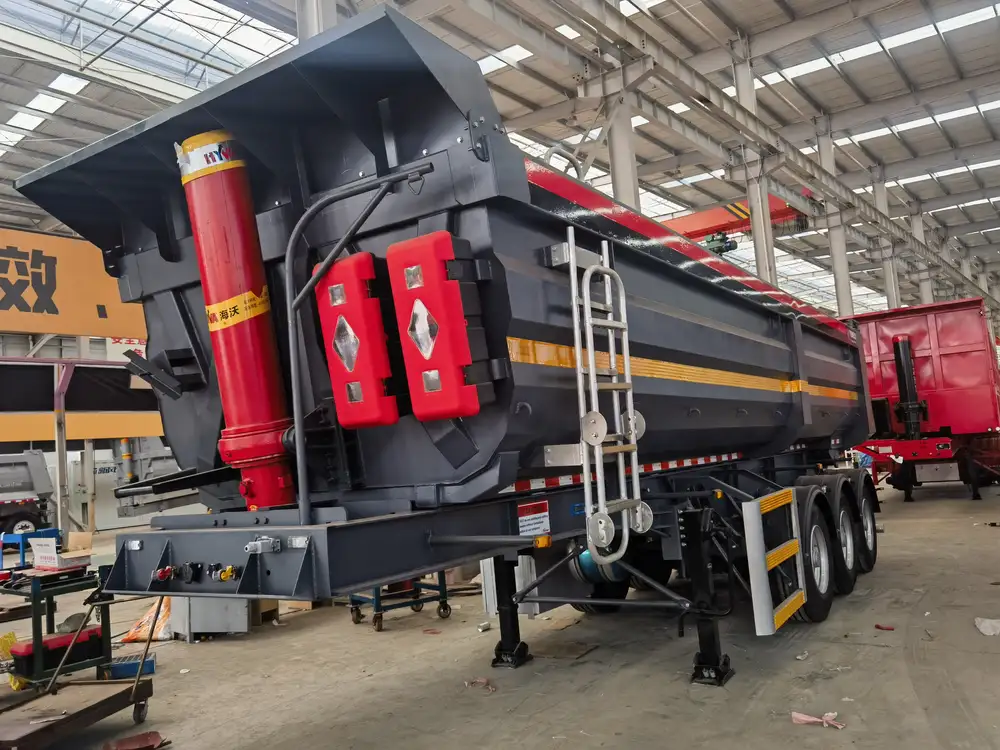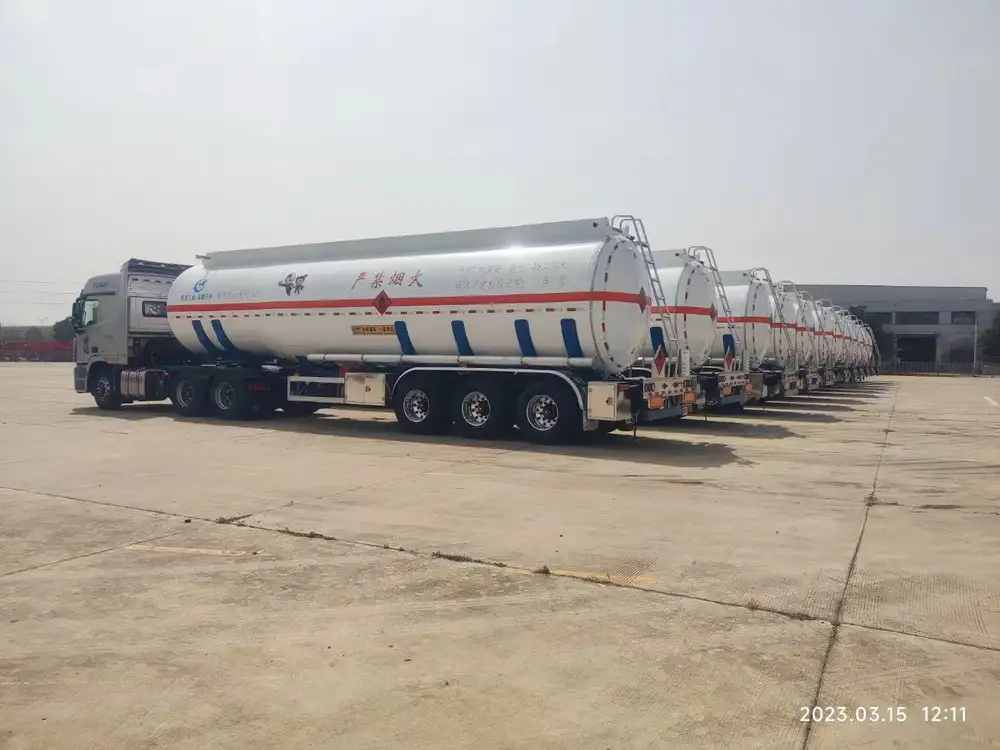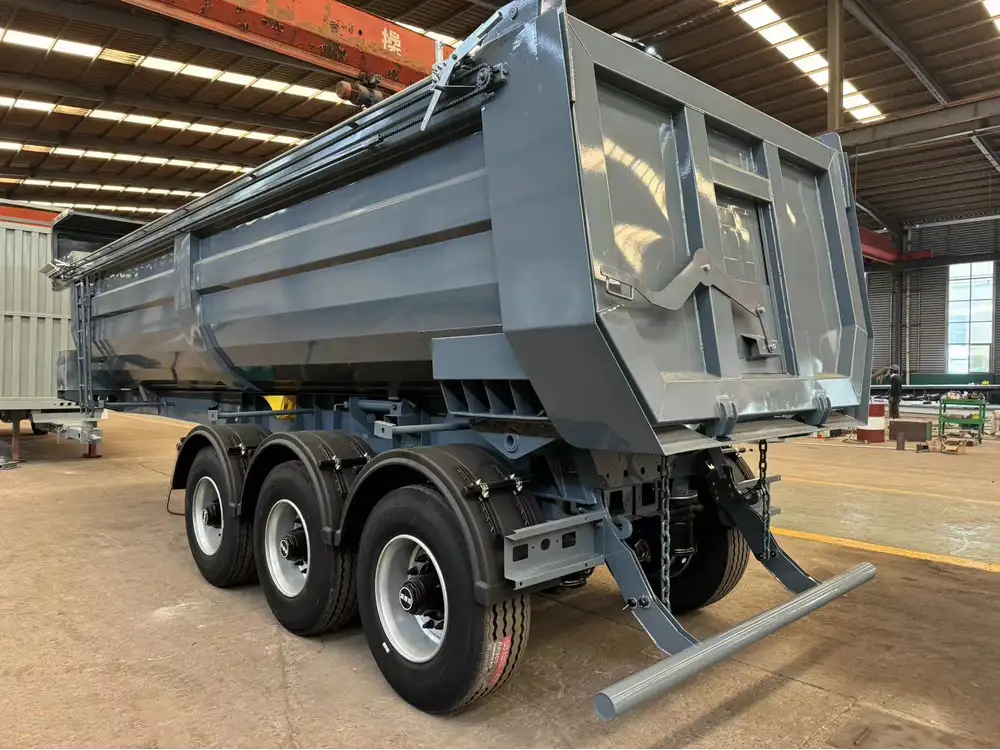When it comes to semi-trailers, one can’t underestimate the significance of axle configurations. The number of axles on a semi-trailer plays a pivotal role in determining its load capacity, stability during transportation, and adherence to regulatory standards. Let’s delve deeply into this subject, exploring the intricacies and nuances of axle configurations, potential user concerns, and the superior benefits offered by various axle layouts.
What is an Axle?
An axle is a critical structural component that connects two wheels and allows them to rotate in unison while bearing weight. It serves as a pivotal element in the vehicle’s structural integrity, affecting its handling, braking performance, and overall stability.
Types of Axles
- Single Axle: Typically found on smaller trailers designed for lighter loads.
- Tandem Axle: Consisting of two axles spaced closely together, this configuration disperses weight more evenly and is more commonly used for larger semi-trailers.
- Tridem Axle: With three axles grouped closely, this setup is often employed for maximum load capacity, particularly in heavy-duty trailers.
- Quad Axle: Four axles arranged close together, providing enhanced stability and weight distribution for exceptionally heavy loads.

How Many Axles on a Semi-Trailer?
The number of axles on a semi-trailer can vary based on several factors including the type of cargo being transported, regulations by state or country, and the specific design of the trailer itself. Here’s a breakdown of common axle configurations found on semi-trailers:
| Axle Configuration | Description | Typical Load Capacity |
|---|---|---|
| Single Axle | One axle supporting two wheels. | Up to 20,000 lbs |
| Tandem Axle | Two axles, generally with a spacing of 36 inches. | Up to 34,000 lbs |
| Tridem Axle | Three axles grouped closely together. | Up to 42,500 lbs |
| Quad Axle | Four axles configured for very heavy loads. | Up to 48,000 lbs |
Regulatory Considerations
Understanding the regulations regarding the maximum number of axles and weight limits is crucial for any transport company or individual hauler.
- Federal Regulations: In the U.S., the Federal Highway Administration (FHWA) sets weight limits for axles. For instance, a tandem axle must not exceed 34,000 lbs.
- State Regulations: Individual states may impose stricter limits or specific requirements regarding axle configurations based on road conditions.
- International Regulations: Consider different weight and axle limits applicable in other countries. For example, the maximum allowable weight in the EU for a five-axle truck and trailer combination is 40 tonnes.
Choosing the Right Axle Configuration
Selecting the appropriate axle configuration is vital for ensuring efficiency, safety, and cost-effectiveness in logistics. To assist in this decision-making process, consider the following factors:
- Load Types: Different axle configurations cater to different types of freight. For instance, flatbed trailers may utilize tandem axles for lighter loads, while heavy equipment haulers might employ tridem or quad axle configurations.
- Legal Restrictions: Be aware of weight limits legally imposed on certain roadways, ensuring chosen configurations comply with these regulations.
- Terrain: Semi-trailers navigating rough or uneven landscapes benefit from more axles. This provides greater stability and reduces the risk of accidents.

Advantages of Increased Axle Configurations
Enhanced Stability
More axles lead to better weight distribution across the trailer. This improved stability can be critical when turning, especially at higher speeds or on uneven terrain.
Increased Load Capacity
With additional axles, it’s possible to transport heavier loads without exceeding legal weight limits. This allows you to maximize your load efficiency, delivering more product per trip.

Enhanced Maneuverability
More axles can increase the maneuverability of a semi-trailer. With multiple pivot points, the trailer can navigate tight turns more effectively.
Common Misconceptions About Axles
More Axles Equals More Weight: While it’s true that adding axles increases the trailer’s weight, it also allows for a higher weight limit for the cargo itself. Thus, transporters can carry more goods.
Trailers with Fewer Axles Are Safer: This notion is misleading. The safety of a trailer depends on numerous factors, including load distribution and maintenance, not merely the number of axles.
All Axles Are Created Equal: Many users believe that all axles provide similar performance. However, configurations must align with specific load profiles and regulatory standards for optimum performance.
Axle Maintenance and Care
Maintaining axles is critical for ensuring the long-term performance of semi-trailers. Regular inspections and maintenance should not be overlooked. Here’s what needs to be monitored:

Routine Inspections
- Visual Checks: Inspect for signs of wear and tear, rust, or physical damage.
- Lubrication: Ensure that all moving parts, including bearings, are regularly lubricated to minimize friction and wear.
Weight Distribution Checks
Improper weight distribution can lead to accelerated wear on axles. Regularly verify that loads are distributed correctly across the trailer.
Tire Maintenance
Inspect the tires regularly, as uneven tire wear can indicate potential axle issues. Ensure the correct air pressure is maintained to promote even wear.

Best Practices for Loading Semi-Trailers
To extend the life of your semi-trailer and improve vehicle performance, proper loading techniques are essential:
Distribute Weight Evenly: Position heavy cargo near the trailer’s axle and distribute lighter items outward for balance.
Secure Loads Properly: Use straps and tarpaulins to ensure loads do not shift during transit. This maintains the center of gravity, reducing the risk of rollovers.
Check the Load Height: Avoid exceeding legal height limits to ensure safety while passing under bridges and in tight spaces.
Innovations in Semi-Trailer Axle Technology
The trucking industry is consistently evolving with technological advancements. Here are some emerging trends in axle configurations:
ALM Technology (Automated Load Monitoring): This technology allows real-time monitoring of axle loads, ensuring compliance with regulatory standards and enhancing operational safety.
Air Suspension Systems: These systems improve ride comfort and cargo safety by maintaining vehicle stability and reducing the impact of road imperfections.
Weight-Sensing Axles: These smart axles provide drivers with immediate feedback regarding load weight, aiding in compliant transportation.
Conclusion
The number of axles on a semi-trailer isn’t merely a statistic; it represents a complex interplay of factors impacting load capacity, safety, and compliance. Understanding these configurations allows transport professionals to optimize their operations while complying with legal requirements. Whether selecting the right axle configuration for specific cargo types or maintaining existing axles for longevity, this comprehensive understanding is crucial. By generating a well-informed approach to axle configurations, we can enhance the efficiency of our logistics operations, ultimately driving success in the transportation industry.
Make informed decisions today about your semi-trailers, and ensure efficient, safe, and legal hauling practices!



